Wondering how to enable or disable Hibernate in Windows 10 on your PC?
In Hibernation, your computer is inactive rather than being shut down or put to sleep. A snapshot of your system files and drivers is captured by your computer when it hibernates, and that snapshot is saved to your hard drive before it shuts down. As a result, your computer will start up more quickly because files and settings won’t need to be reset.
This feature is enabled by default on your Windows, and it is customizable, which means you can enable or disable it according to your own preferences.
If you are looking for easy ways of doing so, you are in the right place because in this guide, we will walk you through several methods of enabling and disabling Hibernation. All the methods are fairly easy to execute, and should not take much of your time.
Let’s get started!
1. Use Command Prompt.
Windows’ Command Prompt is a program that simulates an input field in a text-based interface with the Windows Graphical User Interface (GUI). With it, you can execute commands and perform advanced administrative tasks.
Here is how you can use Command Prompt to enable/disable hibernation in Windows 10:
- Type cmd in the search bar and click on Run as administrator to launch elevated Command Prompt.
- Inside the Command Prompt window, type the command mentioned below and hit Enter to enable Hibernate in Windows 10.
powercfg -h on OR powercfg -hibernate on
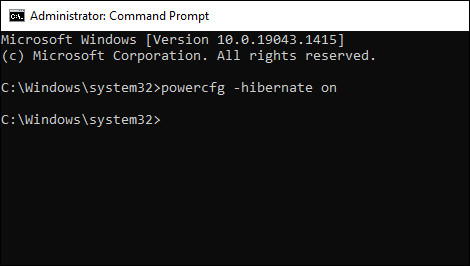
- To disable Hibernate, execute the following command.
powercfg -h off OR powercfg -hibernate off
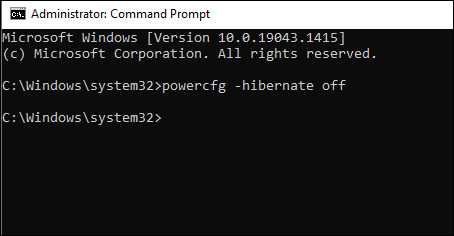
- Once done, type Edit power plan in the search bar and hit Open.
- In the next window, click on the Change advanced power settings hyperlink.
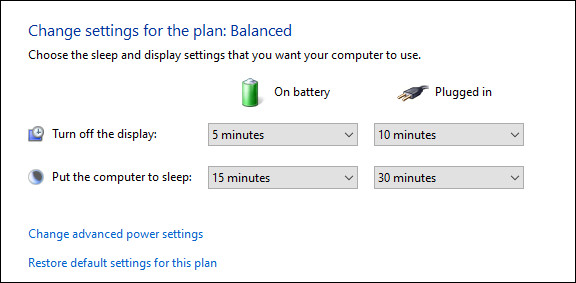
- Now expand the Battery option and make sure that the Critical battery action and Low battery action settings under Battery are not set to Hibernate.
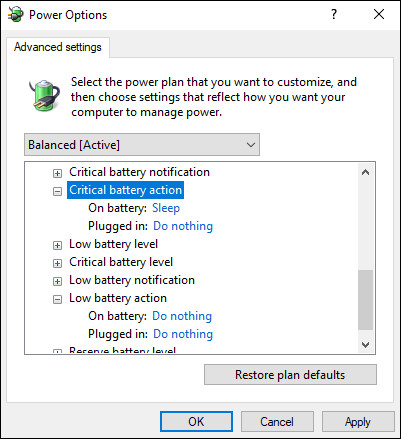
- Finally, hit Apply to save the changes and close Command Prompt.
This should make the desired changes in no time.
2. Modify Windows Registry.
Windows’ Registry stores low-level information about an operating system’s processes and applications. The operating system refers to this information when performing relevant functions, which makes the Registry Editor a vital aspect of our operating system.
In this method, we will modify Windows Registry to enable/disable Hibernate. Make sure, however, that you log into Windows as an administrator before proceeding with the steps mentioned below.
- Press Windows + R keys simultaneously on your keyboard to open a Run dialogue box.
- Inside the text field of the dialogue box, type regedit and hit Enter to open the Registry Editor.
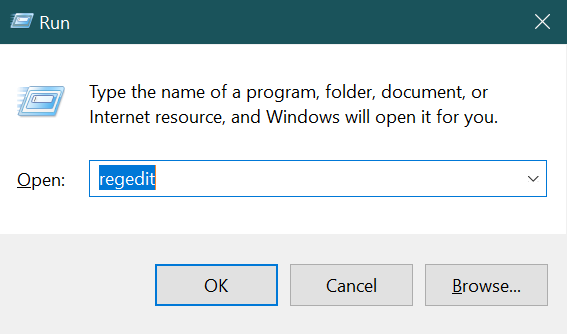
- Once you are inside the Registry Editor, navigate to the location mentioned below.
HKEY_LOCAL_MACHINE\SYSTEM\CurrentControlSet\Control\Power
- With the Power key selected, double-click on HibernateEnabled.
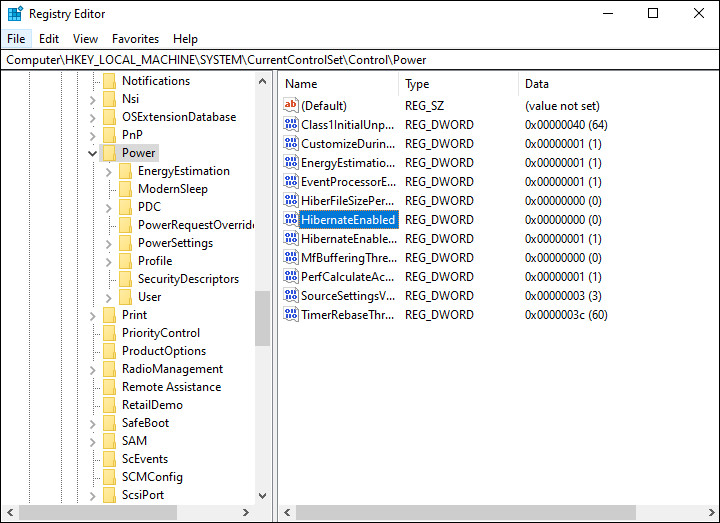
- To enable Hibernate, type 1 under Value data and hit Enter.
- To disable Hibernate, type 0 under Value data and hit Enter.
- Finally, close the Registry Editor and restart your PC to save the changes.
3. Try Using CleanMyPC.
If after following both steps in this guide, you are still unable to accomplish the desired action, it may be that your system has become corrupt.
To eliminate any bugs or corruption errors from your PC, you should perform a deep cleaning before following this guide. If this scenario is applicable, using a good PC cleaner can be beneficial, as manual cleaning can take up a lot of time and energy.
In case you’ve never used a PC cleaner before, we recommend CleanMyPC.

Using CleanMyPC, you can quickly and efficiently fix all PC issues. It comes with a wide range of tools that include (but are not limited to) a multi-uninstaller, speed boost, and registry cleaner. These tools can optimize your system and fix most problems.
If this looks like something your PC desperately needs, install CleanMyPC now and get your PC up and running like new!
4. Modify Advanced Power Options.
In the final method, we will disable Hibernation through the Advanced Power Options window. You can specify here the time frame after which you want your system to go into hibernation.
- Type Edit power plan in the search bar and hit Open.
- In the next window, click on the Change advanced power settings hyperlink.
- Now double-click on Sleep and then double-click on Sleep after.
- Set the On battery (Minutes) to how many minutes you want your computer to sit idle for before it goes into hibernation. To completely disable the feature, set the On battery (Minutes) to Never.
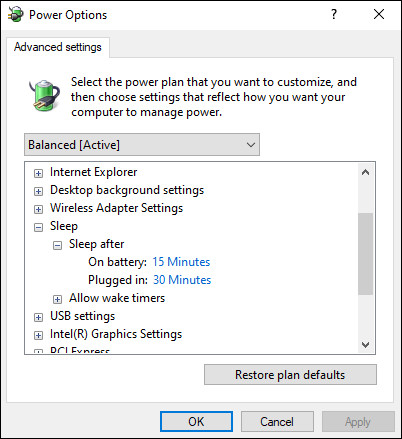
This brings us to the end of our guide on ways to enable or disable Hibernate in Windows 10. We tried walking you through all the steps in detail and hope that one of the methods mentioned in this post did the trick for you. In case you still have any confusion about the steps, please let us know in the comment section below!
If this guide helped you, please share it. 🙂





